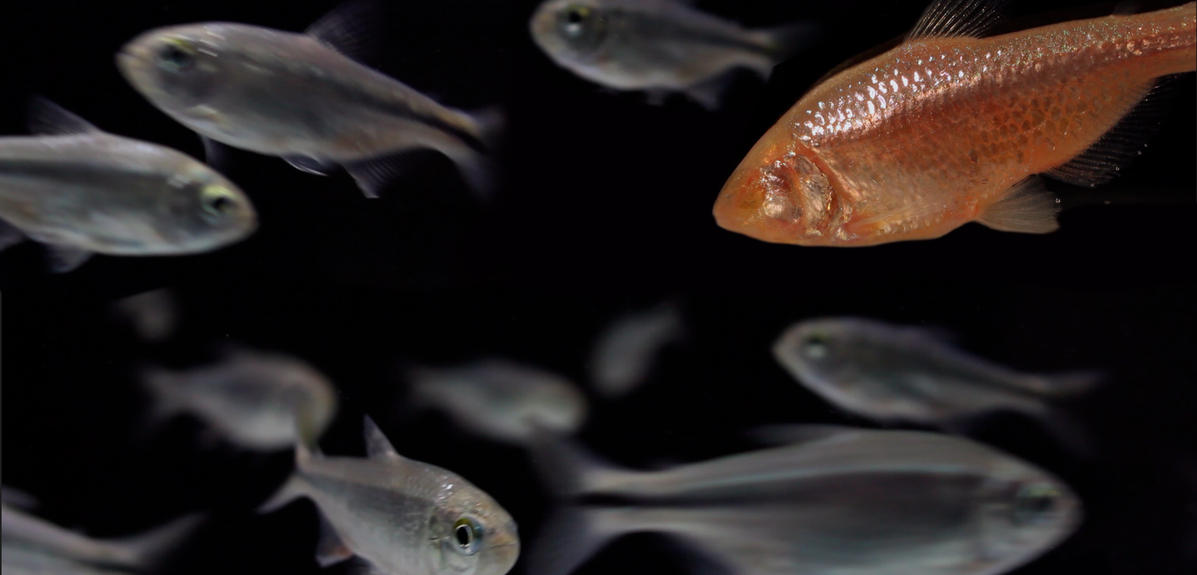You are here
The Blind Fish of Mexico
Translation by Jay Swanson
Colorful skin, an aggressive disposition, and sparkling eyes.
Pale skin, a calm demeanor, and no eyeballs whatsoever.
These strikingly different descriptions are of the same species of fish: Astianax Mexicanus, a freshwater fish generally found across the surface of Central America. But a mini sub-population was recently discovered well off the beaten path, isolated in underground caves.
The so-called blind cavefish is an example of a type of isolated animal which has, over the course of successive generations, adapted to a new environment.
Today, these researchers are undertaking an expedition into the depths of mexican caves to study the fish in their natural habitat, and attempt to cast light on the mechanisms of evolution.
Sylvie Rétaux,
What we’re most interested in with the blind cavefish is understanding the changes that occured within their brains compared to their ancestors who lived in the rivers of the region. So we’re trying to understand their anatomical changes and differences in neurotransmission. Specifically the ones that led to the changes in their behavior which enabled them to adapt to life in the dark.
The goal here is to take samples of their environment and try to better understand their living conditions, because their main struggle in these caves is finding food, as well as sexual partners to mate with.
LIVE
Are there three here? only two? The ones from the little pond?
Sylvie Rataux
Our second goal is to get genetic samples. And the third goal is to conduct behavioral studies within their natural environment.
LIVE
You see, there are huge ones ! And then here you have little minnows…
Sylvie Rataux
So our behavioral studies had two different goals. On one hand, we wanted to test their sense of smell. On the other, we wanted to study their acoustic communication. And we wanted to do these two types of experiments where they actually live. So smell and sound because in this environment they can’t see anything. So they have to compensated with their other senses. The question is what behavioral changes came about that led them to adapt to life in the dark ? and eventually to the loss of their eyes? How do they communicate? How do they orient themselves? How can they find food? These are the sensory compensations with sound and smell that we’re trying to study here in their natural environment to test what we’ve found out in the lab.
ITV Maryline BLIN
The idea behind the experiment is to introduce odors.
We use an AMEENO acid in a very precisely controlled dose.
This means we can see at which concentration the fish change their behavior in their search for food.
And so this is how we can determine the sensitivity of their sense of smell.
Sylvie Rétaux
In the literature on the subject, we see dates for the emergence of these cavefish dating back millions of years, or a hundred thousand years, or tens of thousand of years. But the studies we’re running - in collaboration with Didier Casagne and his apprentice Julien Fumet - our studies suggest that the populations have been here for much less time than that. Didier and Julien’s models suggest only about twenty thousand years.
So in fact, what this means is that it doesn’t have to take that long for a surface fish with eyes and skin pigmentation, to become a blind cavefish.
If it takes so little time for these fish to adapt and develop such dramatic physiological and behavioral changes, like the ones we see here - they’re transparent, totally blind, and have some strange behaviors - then it’s very probable that there wasn’t a need for many new mutations once the fish were introduced to the caves. It’s probable, to adapt to life as a cavefish, that they tapped into the genetic diversity that already existed within the genomes of their surface-dwelling ancestors. What could have been the changes that were most advantageous in adapting to life in the dark? The ones that most heavily benefited survival in the caves.
Back in the laboratory, the hunt continues for specific genes linked to the adaptation of Astianax mexicanus, a fish held dear by biologists as a true window into the evolution of species...
Mexico's Blind Cavefish: Evolution in Action
Over the years, they have not only lost their gray color, but also their eyes. A subpopulation of Mexican cave-dwelling fish has seen its morphology profoundly changed over generations. A team of researchers went on location in Mexico to study these fish in their natural environment.
Maryline Blin
L'Institut de Neurosciences de Paris Saclay
CNRS / Université Paris-Sud / Université Paris-Saclay





